
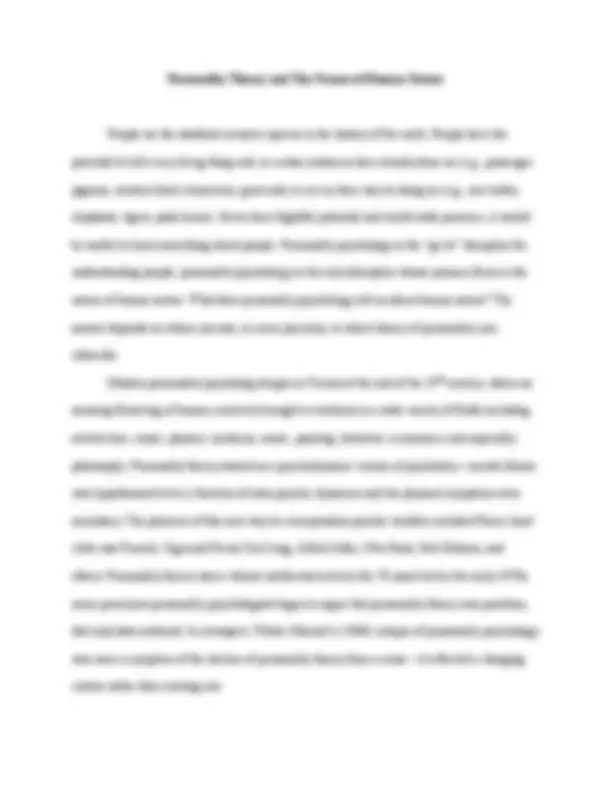

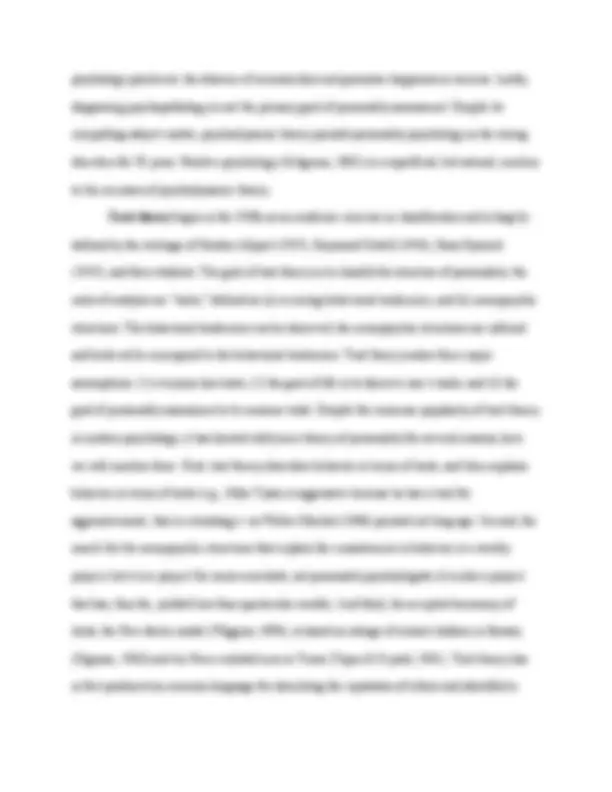
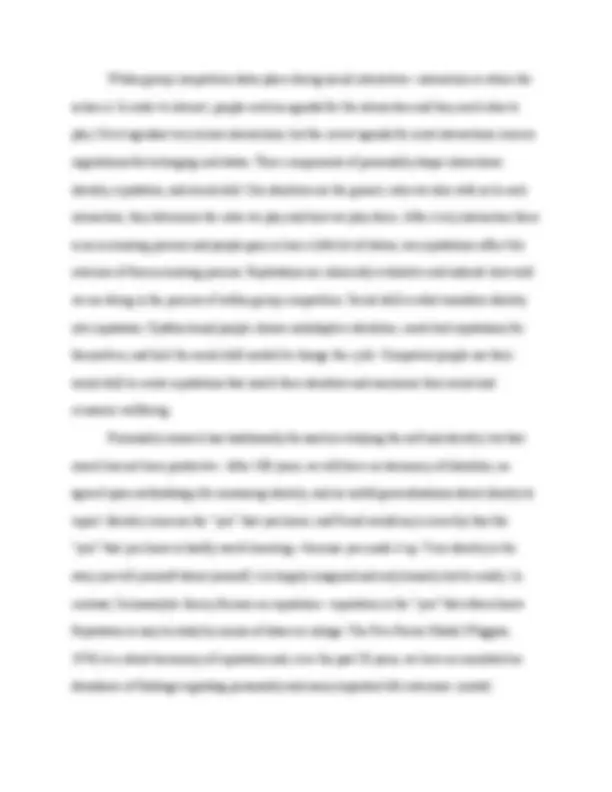
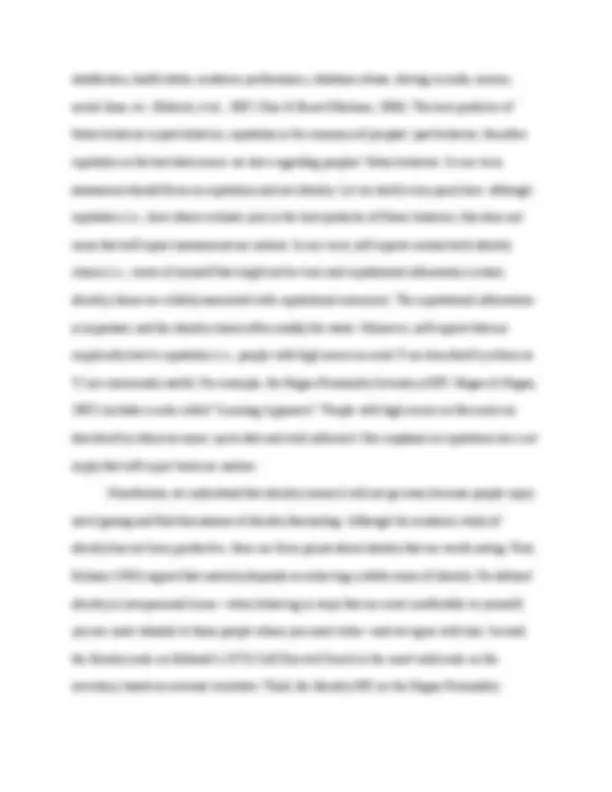
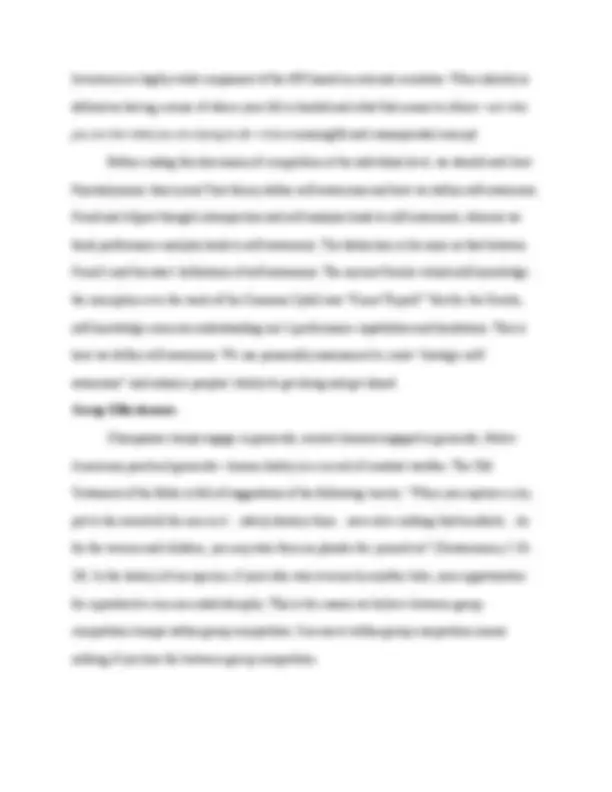
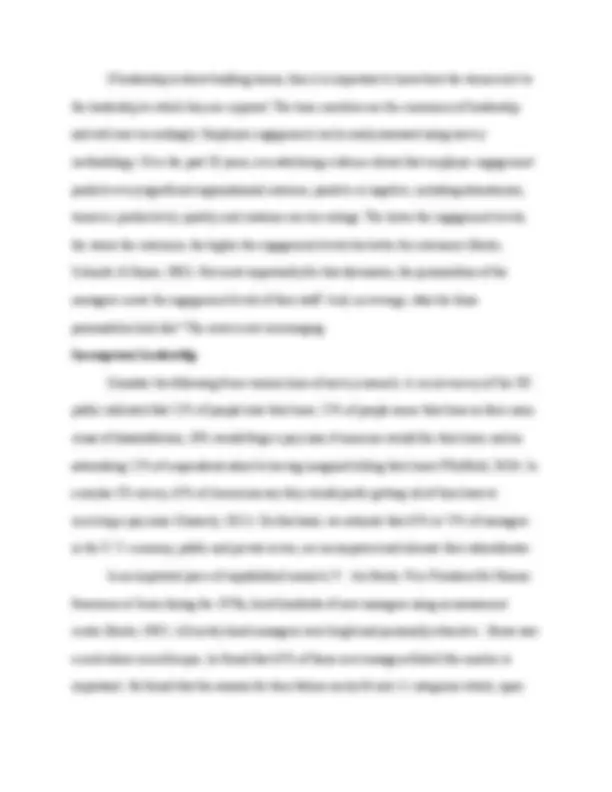
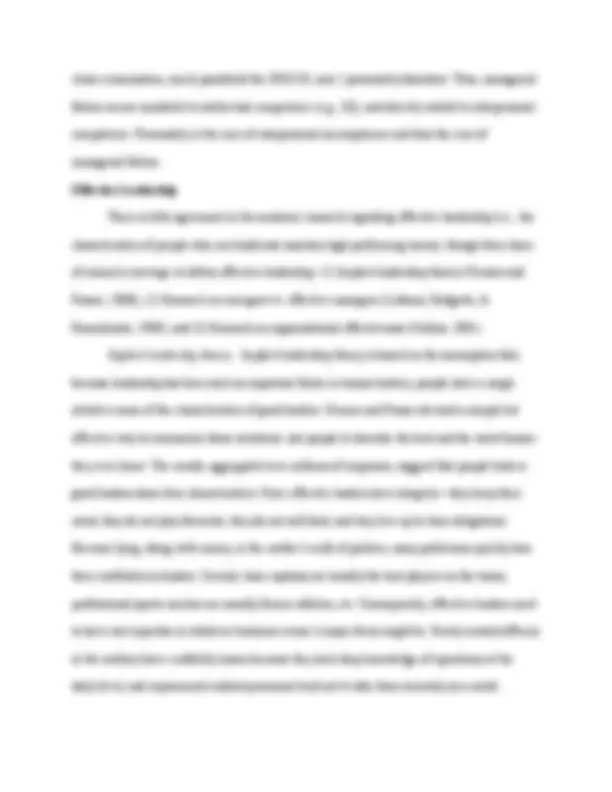
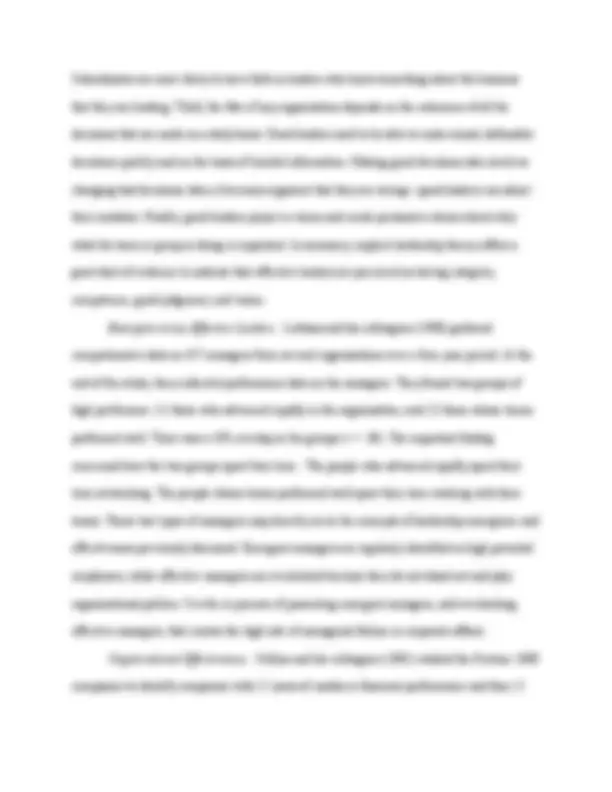

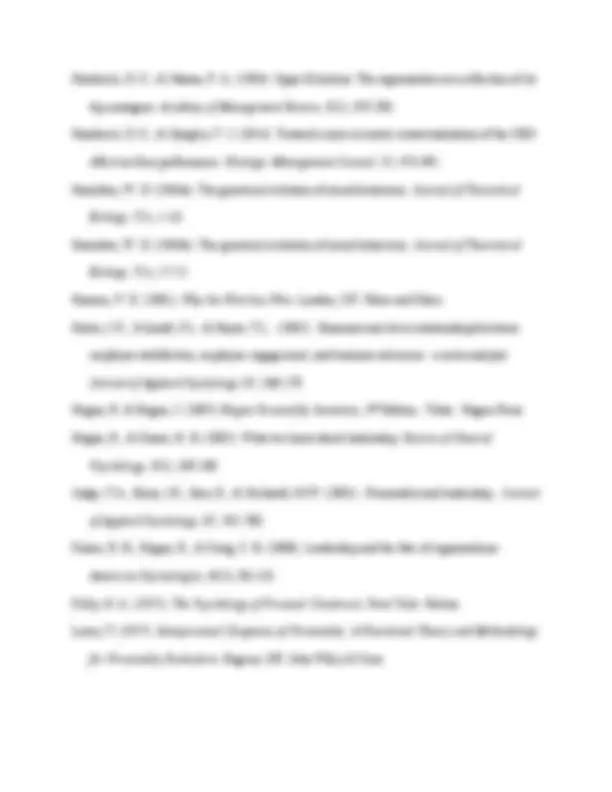




Study with the several resources on Docsity

Earn points by helping other students or get them with a premium plan


Prepare for your exams
Study with the several resources on Docsity

Earn points to download
Earn points by helping other students or get them with a premium plan
Community
Ask the community for help and clear up your study doubts
Discover the best universities in your country according to Docsity users
Free resources
Download our free guides on studying techniques, anxiety management strategies, and thesis advice from Docsity tutors
An overview of modern personality theory, highlighting its significance in understanding human nature and behavior. It discusses the importance of competition within and between groups, the role of social skill and leadership, and the history and development of personality theory. The document also touches upon the three major theories of personality: psychodynamic, trait, and interpersonal, and their assumptions and limitations.
Typology: Study notes
1 / 21

This page cannot be seen from the preview
Don't miss anything!














Personality Theory and The Nature of Human Nature Robert Hogan & Ryne A. Sherman Hogan Assessment Systems Pre-print under review for special issue at Personality and Individual Differences
Abstract This overview of modern personality theory makes six points. First, personality theory is crucial for understanding life. Second, life is largely about competition. Third, there is competition within groups for individual status, and there is competition between groups for collective survival. Fourth, academic psychology focuses on within group competition, but between group competition can be more consequential. Fifth, successful within group competition depends on social skill; successful between group competition depends on leadership. And finally, personality determines/explains the outcome of both forms of competition.
The collapse of interest in personality theory created a hole in our ability to understand human affairs. This is because personality theory is unavoidable: everything we do depends on our assumptions about human nature. Even social psychology depends on (often untenable and unspecified) assumptions about human nature. We need to make these assumptions explicit for two reasons: (1) ideas have consequences—they drive everything we do; and (2) knowledge proceeds more efficiently from error than from confusion—bad ideas can be corrected, but unspecified assumptions lead to futility. The Three Theories of Personality Psychology There are three major theories of personality, with sub-types within each theory. The first is the many versions of psychodynamic theory associated with clinical psychology. The second is trait theory, which concerns cataloguing dimension of individual differences. The third is interpersonal theory which largely concerns career coaching and development—i.e., applications to everyday life. In the following paragraphs, we briefly describe the history of each theory, identify its core assumptions, and evaluate the consequences of these assumptions. Psychodynamic theory dominated personality psychology for 70 years and contains many valid insights. For example, early experience shapes later personality, much social behavior is unconsciously motivated, people are inherently irrational, and psychology can be used for human betterment. The three major assumptions of psychodynamic theory are: (1) everyone is somewhat neurotic; (2) the goal of life is to overcome one’s neurosis; and (3) the goal of personality assessment is to identify the sources of one’s neurosis. The problem with psychodynamic theory is the first assumption; everyone is not neurotic. Although most people have issues that bother them from time to time, to be neurotic is to be dysfunctional on a continuing basis and that is obviously not true for most people. In addition, as positive
psychology points out, the absence of neurosis does not guarantee happiness or success. Lastly, diagnosing psychopathology is not the primary goal of personality assessment. Despite its compelling subject matter, psychodynamic theory pointed personality psychology in the wrong direction for 70 years. Positive psychology (Seligman, 2002) is a superficial, but natural, reaction to the excesses of psychodynamic theory. Trait theory began in the 1930s as an academic exercise in classification and is largely defined by the writings of Gordon Allport (1937), Raymond Cattell (1943), Hans Eysenck (1947), and their students. The goal of trait theory is to classify the structure of personality; the units of analysis are “traits,” defined as (a) recurring behavioral tendencies; and (b) neuropsychic structures. The behavioral tendencies can be observed; the neuropsychic structures are inferred and believed to correspond to the behavioral tendencies. Trait theory makes three major assumptions: (1) everyone has traits; (2) the goal of life is to discover one’s traits; and (3) the goal of personality assessment is to measure traits. Despite the immense popularity of trait theory in modern psychology, it has limited utility as a theory of personality for several reasons; here we will mention three. First, trait theory describes behavior in terms of traits, and then explains behavior in terms of traits (e.g., Mike Tyson is aggressive because he has a trait for aggressiveness); this is a tautology—as Walter Mischel (1968) pointed out long ago. Second, the search for the neuropsychic structures that explain the consistencies in behavior is a worthy project, but it is a project for neuro-scientists, not personality psychologists (it is also a project that has, thus far, yielded less than spectacular results). And third, the accepted taxonomy of traits, the Five-factor model (Wiggins, 1996), is based on ratings of school children in Hawaii (Digman, 1963) and Air Force enlisted men in Texas (Tupes & Crystal, 1961). Trait theory has in fact produced an common language for describing the reputation of others and identified a
People always live in groups, and every group has a status hierarchy and a religion; (2) the goals of life concern getting along, getting ahead, and finding meaning; and (3) the goal of assessment is to predict individual differences in the ability to get along, get ahead, and find meaning. There are huge individual differences in peoples’ ability to get along, get ahead, and find meaning and there are huge payoffs in terms of fitness for being able to do so. Evolutionary theory tells us that life is about competition. There is competition at the individual level (within groups) for status, power, and social acceptance; this competition is driven by sexual selection (Ridley, 1991). Then there is competition between groups for territory, market share, political dominance, and ultimately survival. Warfare drives human evolution at the group level (Turchin, 2006). There are major individual differences in the ability of individuals to compete for status, and there are major differences in the abilities of groups to compete for survival (e.g., the Rohingya). Although psychologists focus almost exclusively on within group competition, between group competition is more consequential. What is good for the individual may or may not be good for the group. Free riders—rent seekers who enjoy the benefits of group living without contributing to its maintenance and functioning—represent one such example (Cornes, 1986). On the other hand, what is good for the group is usually good for the members. Success at within-group competition is a function of social skill, which includes the ability to get along with others (to avoid expulsion from the group) and to get ahead (to maximize one’s resources). Success in between-group competition is a function of leadership. Socioanalytic theory concerns predicting and explaining effectiveness of both individuals and groups. Individual Effectiveness
Within group competition takes place during social interaction—interaction is where the action is. In order to interact, people need an agenda for the interaction and they need roles to play. Overt agendas vary across interactions, but the covert agenda for most interactions concern negotiations for belonging and status. Three components of personality shape interactions: identity, reputation, and social skill. Our identities are the generic roles we take with us to each interaction; they determine the roles we play and how we play them. After every interaction there is an accounting process and people gain or lose a little bit of status; our reputations reflect the outcome of this accounting process. Reputations are inherently evaluative and indicate how well we are doing in the process of within-group competition. Social skill is what translates identity into reputation. Dysfunctional people choose maladaptive identities, create bad reputations for themselves, and lack the social skill needed to change the cycle. Competent people use their social skill to create reputations that match their identities and maximize their social and economic wellbeing. Personality research has traditionally focused on studying the self and identity, but that search has not been productive. After 100 years, we still have no taxonomy of identities, no agreed upon methodology for measuring identity, and no useful generalizations about identity to report. Identity concerns the “you” that you know, and Freud would say (correctly) that the “you” that you know is hardly worth knowing—because you made it up. Your identity is the story you tell yourself about yourself, it is largely imagined and only loosely tied to reality. In contrast, Socioanalytic theory focuses on reputation—reputation is the “you” that others know. Reputation is easy to study by means of observer ratings. The Five-Factor Model (Wiggins,
Inventory is a highly valid component of the HPI based on external correlates. When identity is defined as having a sense of where your life is headed and what that means to others—not who you are but what you are trying to do—it is a meaningful and consequential concept. Before ending this discussion of competition at the individual level, we should note how Psychodynamic theory and Trait theory define self-awareness and how we define self-awareness. Freud and Allport thought introspection and self-analysis leads to self-awareness, whereas we think performance analysis leads to self-awareness. The distinction is the same as that between Freud’s and Socrates’ definitions of self-awareness. The ancient Greeks valued self-knowledge: the inscription over the tomb of the Cumaean Sybill was “Know Thyself.” But for the Greeks, self-knowledge concerns understanding one’s performance capabilities and limitations. This is how we define self-awareness. We use personality assessment to create “strategic self- awareness” and enhance peoples’ ability to get along and get ahead. Group Effectiveness. Chimpanzee troops engage in genocide, ancient humans engaged in genocide, Native Americans practiced genocide—human history is a record of constant warfare. The Old Testament of the Bible is full of suggestions of the following variety: “When you capture a city, put to the sword all the men in it…utterly destroy them…save alive nothing that breatheth…As for the women and children, you may take them as plunder for yourselves” (Deuteronomy 2:10- 20). In the history of our species, if your tribe was overrun by another tribe, your opportunities for reproductive success ended abruptly. This is the reason we believe between-group competition trumps within-group competition. Success at within-group competition means nothing if you lose the between-group competition.
It seems clear that the success of armies, athletic teams, business enterprises, universities, religious organizations—any collective activity—depends on the leadership of that collectivity. But from WWII until the early 1980s, academic psychology thought individual differences in the talent for leadership was a myth, that leadership was situational, and if you were successful in a leadership role, you were just lucky. As of today, there is still no consensus regarding the characteristics of competent leaders. In our view, the academic study of leadership suffers from five major problems: (1) the wrong definition of leadership; (2) no attention to the consequences of leadership; (3) no attention to the subordinates’ view of leadership; (4) no attention to derailment; and (5) no attention to personality. Progress is being made, but these issues remain salient. We now take them up in turn. Defining Leadership. Most research defines leadership in terms of the people at the top of organizations. But who gets to the top of large, hierarchical, bureaucratic, male dominated organizations? People with good political skills who win the within-group competition for status. A meta-analysis of leader personality (i.e., the personality of people in leadership roles) indicates that leaders tend to score low on Neuroticism and high on Extraversion, Openness, and Conscientiousness (Judge, Bono, Ilies, & Gerhardt, 2002). Clearly these individuals have talent for acquiring status. But, do they have any talent for leading their groups to success? An alternative view of leadership, and one that we prefer, is to define leadership from the perspective of group effectiveness. For the most part, people are biologically wired to behave selfishly (Dawkins, 1976). However, people are also capable of altruism when altruism (a) serves their long-term self-interest or (b) promotes the interests of those sharing their genetic material (Fletcher & Doebeli, 2008; Hamilton, 1964a, b; Nowak, Tarnita, & Wilson, 2010; Trivers,
If leadership is about building teams, then it is important to know how the teams react to the leadership to which they are exposed. The team members are the consumers of leadership and will react accordingly. Employee engagement can be easily assessed using survey methodology. Over the past 20 years, overwhelming evidence shows that employee engagement predicts every significant organizational outcome, positive or negative, including absenteeism, turnover, productivity, quality, and customer service ratings. The lower the engagement levels, the worse the outcomes, the higher the engagement levels the better the outcomes (Harter, Schmidt, & Hayes, 2002). But most importantly for this discussion, the personalities of the managers create the engagement levels of their staff. And, on average, what do those personalities look like? The news is not encouraging. Incompetent Leadership Consider the following from various lines of survey research. A recent survey of the UK public indicated that 22% of people hate their boss, 52% of people name their boss as their main cause of dissatisfaction, 20% would forgo a pay raise if someone would fire their boss, and an astonishing 12% of respondents admit to having imagined killing their boss (Whitfield, 2018). In a similar US survey, 65% of Americans say they would prefer getting rid of their boss to receiving a pay raise (Casserly, 2012). On this basis, we estimate that 65% to 75% of managers in the U. S. economy, public and private sector, are incompetent and alienate their subordinates. In an important piece of unpublished research, V. Jon Bentz, Vice President for Human Resources at Sears during the 1970s, hired hundreds of new managers using an assessment center (Bentz, 1985). All newly hired managers were bright and personally attractive. Bentz was a meticulous record keeper; he found that 65% of these new managers failed (the number is important). He found that the reasons for their failure nicely fit into 11 categories which, upon
closer examination, nicely paralleled the DSM III, axis 2 personality disorders. Thus, managerial failure seems unrelated to intellectual competence (e.g., IQ), and directly related to interpersonal competence. Personality is the core of interpersonal incompetence and thus the core of managerial failure. Effective Leadership There is little agreement in the academic research regarding effective leadership (i.e., the characteristics of people who can build and maintain high performing teams), though three lines of research converge to define effective leadership: (1) Implicit leadership theory (Kouzes and Posner, 2008); (2) Research on emergent vs. effective managers (Luthans, Hodgetts, & Rosenkrantz, 1988); and (3) Research on organizational effectiveness (Collins, 2001). Implicit leadership theory. Implicit leadership theory is based on the assumption that, because leadership has been such an important factor in human history, people have a rough intuitive sense of the characteristics of good leaders. Kouzes and Posner devised a simple but effective way to summarize those intuitions: ask people to describe the best and the worst bosses they ever knew. The results, aggregated over millions of responses, suggest that people believe good leaders share four characteristics. First, effective leaders have integrity—they keep their word, they do not play favorites, they do not self-deal, and they live up to their obligations. Because lying, along with money, is the mother’s milk of politics, many politicians quickly lose their credibility as leaders. Second, team captains are usually the best players on the teams, professional sports coaches are usually former athletes, etc. Consequently, effective leaders need to have real expertise in whatever business a team’s major focus might be. Newly minted officers in the military have credibility issues because they lack deep knowledge of operations at the daily level, and experienced enlisted personnel tend not to take them seriously as a result.
years of superior performance. He found 11 companies that fit this profile. For comparison purposes, he also identified 11 companies, in the same industry, who showed only mediocre performance across the same time period. Analyses revealed that the cause of the turnarounds was the arrival of new CEOs. But the crucial finding is not that CEOs matter, but rather what kind of CEO matters. And the answer is the CEO personality is what mattered. In particular, the 11 successful CEOs were: (1) fiercely competitive and hard-working; and (2) humble, modest, and understated. That is, this group of high-performing CEOs were, in Luthan’s (1988) terms, effective not emergent. Thus, the available evidence indicates that effective leaders are (a) trustworthy, (b) competent, (c) have good judgment, (d) project an appealing vision, and (e) blend fierce ambition with personal humility. Thus, leadership effectiveness is a function of personality. Last Thoughts Personality psychology began as an applied activity (Stagner, 1937) and at its best it remains an applied activity directed at solving real problems for real people. The key problems for personality research concern predicting and explaining the outcomes of within and between group competition. Career success (the result of within-group competition) and organizational effectiveness (the result of between-group competition) are the most crucial issues in life. How can personality psychology help people have more successful careers? Mostly by creating strategic self-awareness and eliminating self-defeating behavior. How can personality psychology help organizations become more effective? Mostly by helping them hire effective leaders. Personality assessment is not an exact science; neither is drilling for oil, but both have important practical consequences. Personality assessment provides essential information about
performance potential; well-constructed personality measures predict occupational performance better than IQ, but do not discriminate against minorities, and the longer the tenure on the job, the better personality predicts performance. Personality predicts leadership better than any known alternative. Many people outside our profession equate personality assessment with the MBTI and ignore the accumulated data on the validity of assessment. This is a challenge for all personality psychologists. The future of personality psychology depends on its ability to solve practical problems. We suggest that personality psychologists adopt theoretical perspectives aimed at doing so.
Hambrick, D. C., & Mason, P. A. (1984). Upper Echelons: The organization as a reflection of its top managers. Academy of Management Review, 9(2), 193-206. Hambrick, D. C., & Quigley, T. J. (2014). Toward a more accurate contextualization of the CEO effect on firm performance. Strategic Management Journal, 35, 473-491. Hamilton, W. D. (1964a). The genetical evolution of social behaviour. Journal of Theoretical Biology, 7(1), 1-16. Hamilton, W. D. (1964b). The genetical evolution of social behaviour. Journal of Theoretical Biology, 7(1), 17-52. Hanson, V. D. (2001). Why the West has Won. London, UK: Faber and Faber. Harter, J.K., Schmidt, F.L. & Hayes, T.L. (2002). Business-unit-level-relationships between employee satisfaction, employee engagement, and business outcomes: a meta-analysis. Journal of Applied Psychology, 87, 268-279. Hogan, R. & Hogan, J. (2007) Hogan Personality Inventory, 3rd^ Edition. Tulsa: Hogan Press. Hogan, R., & Kaiser, R. B. (2005). What we know about leadership. Review of General Psychology, 9(2), 169-180. Judge, T.A., Bono, J.E., Ilies, R., & Gerhardt, M.W. (2002). Personality and leadership. Journal of Applied Psychology, 87, 765-780. Kaiser, R. B., Hogan, R., & Craig, S. B. (2008). Leadership and the fate of organizations. American Psychologist, 63(2), 96-110. Kelly, G. A. (1955). The Psychology of Personal Constructs. New York: Norton. Leary, T. (1957). Interpersonal Diagnosis of Personality: A Functional Theory and Methodology for Personality Evaluation. Eugene, OR: John Wiley & Sons.
Luminent, O., Bagby, R. M., Wagner, H. L., Taylor, G. J., & Parker, J. D. A. (1999). Relation between alexithymia and the five-factor model of personality: A facet-level analysis. Journal of Personality Assessment, 73, 345-358. Luthans, F., Hodgetts, R.M., & Rosenkrantz, S.A. (1988). Real managers. Cambridge, MA: Ballinger. Mackey, A. (2008). The effect of CEOs on firm performance. Strategic Management Journal, 29 , 1357-1367. McDougall, W. (1908). Introduction to Social Psychology. London: Methuen & Co. Mead, G. H. (1934). Mind, Self, and Society. Chicago, IL: University of Chicago Press. Mischel, W. (1968). Personality and Assessment. Mahwah, NJ: Lawrence Erlbaum Associates. Nowak, M., Tarnita, C., E., & Wilson, E. O. (2010). The evolution of eusociality. Nature, 466, 1057-1062. Ozer, D. J., & Benet-Martinez, V. (2006). Personality and the prediction of consequential outcomes. Annual Review of Psychology, 57, 401-421. Paunonen, S. V., & Ashton, M. C. (2001). Big five factors and facets and the prediction of behavior. Journal of Personality and Social Psychology, 81(3), 524-539. Quigley, T. J., & Graffin, S. D. (2017). Reaffirming the CEO effect is significant and much larger than change: A comment on Fitza (2014). Strategic Management Journal, 38, 793-
Quigley, T. J., & Hambrick, D. C. (2014). Has the “CEO effect” increased in recent decades? A new explanation for the great rise in America’s attention to corporate leaders. Strategic Management Journal, 36, 821-830.